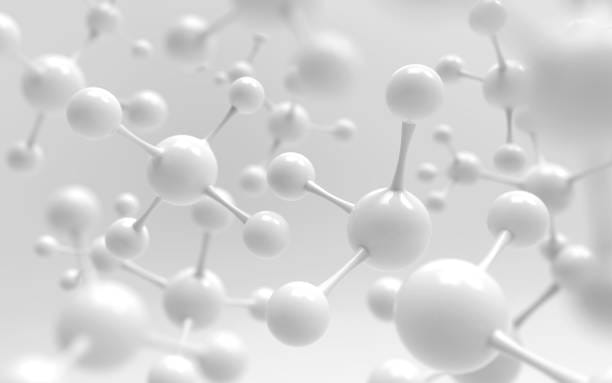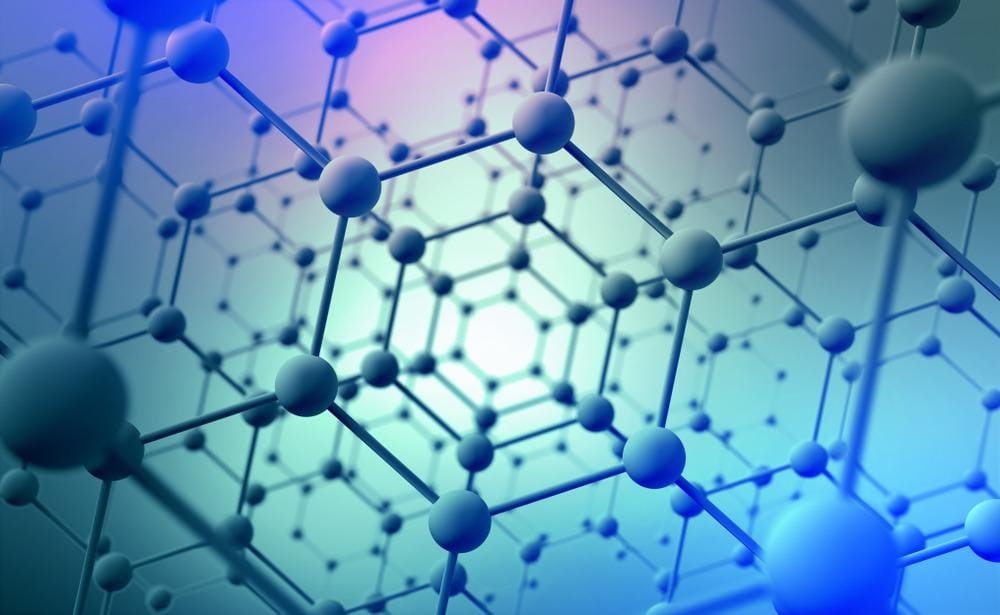We are entering an era where the boundaries of what is possible are being redrawn—not on the grand stages of the cosmos, but within the tiny, invisible realms of atoms and molecules. This is the frontier of nanotechnology, a revolution that doesn’t storm in with thunder, but whispers change on the smallest possible scale. In this microscopic theater, machines thinner than a human hair, particles smaller than a virus, and materials engineered atom-by-atom are changing the very foundations of science, medicine, energy, electronics, and beyond.
Nanotechnology, once the subject of science fiction, has quietly transitioned into science fact. But its impact is anything but quiet. It is rapidly reshaping industries, giving us materials with superhuman strength, devices that detect disease before symptoms appear, and computers that process information with quantum speed. To understand this revolution, we must zoom into a world where conventional physics bends, where quantum forces dominate, and where the future is being constructed, atom by atom.
What Is Nanotechnology?
Nanotechnology operates at the nanometer scale—one-billionth of a meter. For perspective, a single human hair is about 80,000 to 100,000 nanometers thick. A red blood cell measures about 7,000 nanometers in diameter. And a strand of DNA? Just 2.5 nanometers wide.
At this scale, matter behaves differently. Quantum mechanics rules here, not classical physics. Materials that are brittle at the macro scale can become incredibly strong at the nano scale. Gold, for instance, turns red or purple in nanoparticle form. Carbon, when rearranged into nano structures like graphene or carbon nanotubes, becomes stronger than steel yet lighter than aluminum. These new behaviors open a Pandora’s box of potential.
Richard Feynman, the legendary physicist, foresaw this realm as early as 1959 in his now-famous talk, “There’s Plenty of Room at the Bottom.” He imagined manipulating atoms directly, building structures molecule by molecule, and creating machines so small they could travel through the human body. Today, that vision is no longer speculative. It is the beating heart of modern nanoscience.
Tools of the Tiny Trade
The revolution in nanotechnology has been fueled by astonishing advances in instrumentation. The invention of the scanning tunneling microscope (STM) and atomic force microscope (AFM) in the 1980s provided scientists with their first tactile sense of the nanoscale world. These tools don’t just see atoms—they allow scientists to move them.
Electron beam lithography, self-assembly techniques, molecular fabrication, and nanoscale etching have since joined the arsenal. With these, researchers can now build nano-devices with surgical precision. Structures can be created to exact specifications, allowing engineers to design matter that performs specific tasks or possesses unique properties—whether that’s hydrophobicity, superconductivity, or antibacterial resistance.
The Rise of Smart Materials
Nanotechnology has breathed new life into materials science. Today, we are surrounded by what might be called “smart materials”—substances engineered at the nano level to respond to their environment.
Take graphene, a single layer of carbon atoms arranged in a hexagonal lattice. It’s only one atom thick, yet it’s 200 times stronger than steel and an exceptional conductor of heat and electricity. It’s being used to create faster electronics, flexible touchscreens, ultra-sensitive biosensors, and even water filtration systems that can produce drinkable water from seawater or polluted rivers.
Carbon nanotubes, another form of carbon nano structure, possess remarkable electrical properties and tensile strength. They are used to reinforce materials, enhance conductivity in polymers, and even in developing next-generation transistors.
Other nanomaterials, like silver nanoparticles, are being embedded into fabrics to create self-cleaning clothes or medical masks that kill bacteria and viruses on contact. Titanium dioxide nanoparticles make glass surfaces self-cleaning and are used in sunscreens that are transparent yet effective in blocking UV rays.
These aren’t just marginal improvements. They are categorical shifts. We are no longer discovering materials—we are designing them from the atom up.
Nanomedicine: The Body’s New Allies
Perhaps the most exciting and immediate application of nanotechnology is in medicine. Imagine treatments that target only cancer cells, leaving healthy ones untouched. Or tiny machines that travel through your bloodstream, repairing tissue or clearing plaque from arteries. Nanomedicine promises not just better healthcare, but a fundamentally different kind of healthcare.
Nanoparticles are now used to deliver drugs more effectively. Traditional chemotherapy floods the entire body with toxic compounds, damaging both cancerous and healthy cells. But nano-delivery systems can package these drugs in lipid-based carriers (like liposomes or dendrimers) that target specific receptors on tumor cells. The result is higher efficacy, fewer side effects, and faster recovery.
Gold nanoshells are being used in photothermal therapy, where they accumulate in tumor sites and are then heated by infrared light, destroying the cancer cells with minimal harm to surrounding tissue.
Nanotechnology is also revolutionizing diagnostics. Quantum dots—semiconducting nanoparticles—can be engineered to fluoresce in specific colors, allowing doctors to image tumors with unprecedented clarity. Lab-on-a-chip devices, which integrate complex laboratory functions on micro- and nanoscale chips, can analyze a single drop of blood for diseases ranging from HIV to COVID-19 within minutes.
Even regenerative medicine is being transformed. Nano-engineered scaffolds are being used to grow new tissues and even organs. These scaffolds can mimic the natural extracellular matrix of human tissue, promoting cell growth, differentiation, and integration with the body.
In the near future, we may see nano-robots, tiny autonomous machines capable of diagnosing disease, repairing cells, or even altering our genetic code from inside the body. They may sound like science fiction, but early prototypes already exist.
Nanoelectronics and Computing
The electronic devices in our hands, homes, and hospitals are becoming smaller, faster, and more powerful because of nanotechnology. The transistors that form the basis of modern computer chips are now just a few nanometers wide. At this scale, classical physics gives way to quantum effects, and engineers must work with tunneling electrons and probabilistic behaviors.
Moore’s Law, which predicted that the number of transistors on a chip would double roughly every two years, is approaching its physical limit—but nanotechnology offers a new path forward.
Quantum dots, single-electron transistors, and molecular electronics are being developed to keep the momentum going. Future processors may rely on spintronics, where electron spin rather than charge is used to store and process data, enabling quantum computation.
Even storage is changing. Nanotech has allowed the development of 3D NAND flash memory, storing data vertically and vastly increasing capacity. Graphene-based memory and logic gates could soon replace traditional silicon, giving rise to flexible, ultra-thin computers and displays.
This revolution isn’t just about faster phones or smarter AI. It’s about rethinking the fundamental architecture of computing, pushing the limits of speed, energy efficiency, and miniaturization.
Energy at the Nano Scale
As the world grapples with climate change, nanotechnology offers novel solutions to the energy crisis. From solar cells to batteries, from hydrogen production to energy harvesting, nanoscale innovations are making energy cleaner, cheaper, and more efficient.
Quantum dots are now used in next-generation solar cells that are cheaper to produce and more efficient at capturing light across a wider spectrum. These cells can be printed onto flexible materials, creating solar panels that could be rolled out like wallpaper.
Nano-enabled batteries, particularly lithium-ion batteries with nanostructured electrodes, charge faster and last longer. Startups are exploring silicon nanowires to dramatically increase energy density, enabling electric vehicles to travel farther on a single charge.
Nanomaterials are also key to efficient hydrogen production, catalyzing the splitting of water molecules into hydrogen and oxygen. Nano-coatings reduce energy loss in fuel cells and power grids. Even thermoelectric nanomaterials are being used to harvest waste heat and convert it into usable electricity—energy that would otherwise be lost.
These innovations make the dream of sustainable, distributed energy more tangible than ever before.
Environmental Applications
While nanotech offers great promise, it also raises urgent questions about environmental impact. Engineered nanoparticles, after all, may behave unpredictably once released into ecosystems. But nanotechnology also provides tools to clean up the damage we’ve already done.
Nanofilters are being used to purify water, removing contaminants like heavy metals, bacteria, and even viruses. These filters work at incredibly small scales, allowing clean water to pass through while trapping harmful particles.
Nano-remediation technologies use nanoparticles to neutralize pollutants in soil and groundwater. For example, zero-valent iron nanoparticles can break down chlorinated hydrocarbons, converting them into harmless substances.
Air purification systems are also getting a nano-upgrade. Photocatalytic nanomaterials, like titanium dioxide, can break down volatile organic compounds and airborne pollutants when activated by UV light.
Even agriculture is seeing nano-interventions. Nano-pesticides and nano-fertilizers can be delivered more precisely, reducing chemical runoff and environmental damage. Soil sensors equipped with nanotech can monitor crop health and moisture levels in real time, increasing yields while reducing waste.
Risks, Ethics, and the Unknown
No revolution comes without risk. The very thing that makes nanotechnology powerful—its invisibility—also makes it hard to regulate. How do you assess the safety of particles too small to see, too different to behave like anything we’ve known?
There are concerns about toxicity, bioaccumulation, and unintended interactions with biological systems. Nanoparticles, for instance, may penetrate cells and organ membranes, with unknown long-term effects. Regulatory agencies are racing to develop standards and testing protocols that can keep pace with innovation.
Ethical questions also loom. Who will control the most powerful tools ever made? Will nanomedicine widen the gap between rich and poor? Could nano-weapons become a new class of threats? Might we accidentally unleash a grey goo scenario—self-replicating nano-machines consuming the biosphere?
Science fiction, again, echoes through the labs of reality.
Transparency, global cooperation, and responsible innovation will be crucial. The nanotechnology revolution must not only be guided by what is possible, but by what is wise.
Where We Go From Here
Nanotechnology is still in its infancy. What we’ve seen so far—miraculous though it is—may only hint at what’s to come.
Future materials might have properties we can’t even imagine yet. Medical nano-implants could communicate wirelessly with doctors in real-time, offering continuous health monitoring. Smart dust—tiny, networked sensors—could transform everything from logistics to weather prediction. And in the long arc of progress, nanotechnology could become the scaffolding for space elevators, artificial organs, even synthetic life.
The fusion of nanotech with AI, biotechnology, and quantum computing is already accelerating this vision. It is not just a scientific convergence, but a philosophical one—a return to building not from the top down, but from the bottom up.
We are learning to think like nature, to harness the architectures she has spent billions of years refining. Spider silk, lotus leaves, bone tissue, and butterfly wings—all exhibit nano-precision. Biomimicry at the nano level will likely shape the next generation of innovation.
And in doing so, we may come full circle—not dominating nature, but learning to build as she does, from the molecule upward, with elegance, purpose, and precision.






